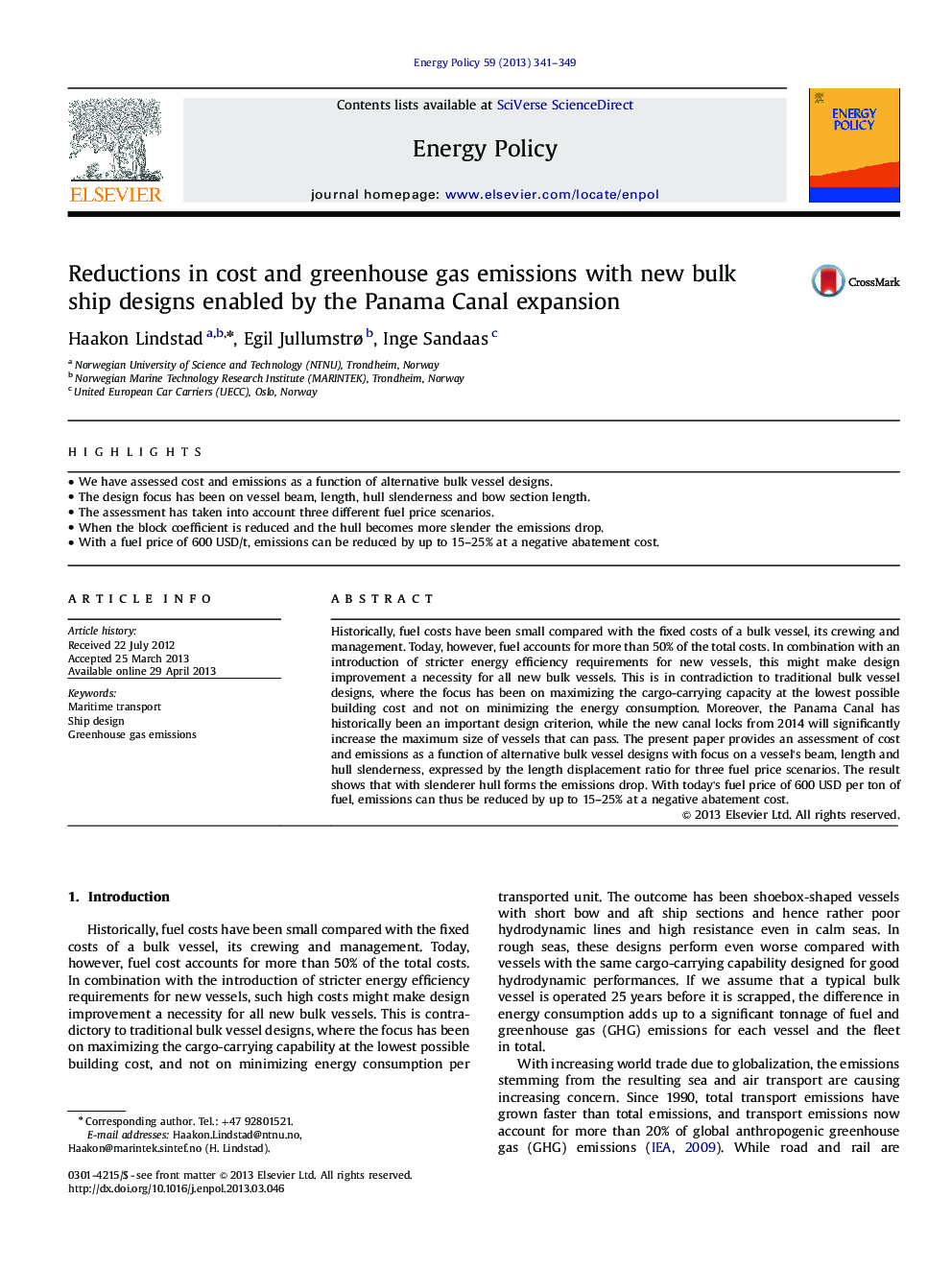| Article ID | Journal | Published Year | Pages | File Type |
|---|---|---|---|---|
| 7404359 | Energy Policy | 2013 | 9 Pages |
Abstract
Historically, fuel costs have been small compared with the fixed costs of a bulk vessel, its crewing and management. Today, however, fuel accounts for more than 50% of the total costs. In combination with an introduction of stricter energy efficiency requirements for new vessels, this might make design improvement a necessity for all new bulk vessels. This is in contradiction to traditional bulk vessel designs, where the focus has been on maximizing the cargo-carrying capacity at the lowest possible building cost and not on minimizing the energy consumption. Moreover, the Panama Canal has historically been an important design criterion, while the new canal locks from 2014 will significantly increase the maximum size of vessels that can pass. The present paper provides an assessment of cost and emissions as a function of alternative bulk vessel designs with focus on a vessel's beam, length and hull slenderness, expressed by the length displacement ratio for three fuel price scenarios. The result shows that with slenderer hull forms the emissions drop. With today's fuel price of 600Â USD per ton of fuel, emissions can thus be reduced by up to 15-25% at a negative abatement cost.
Related Topics
Physical Sciences and Engineering
Energy
Energy Engineering and Power Technology
Authors
Haakon Lindstad, Egil Jullumstrø, Inge Sandaas,
